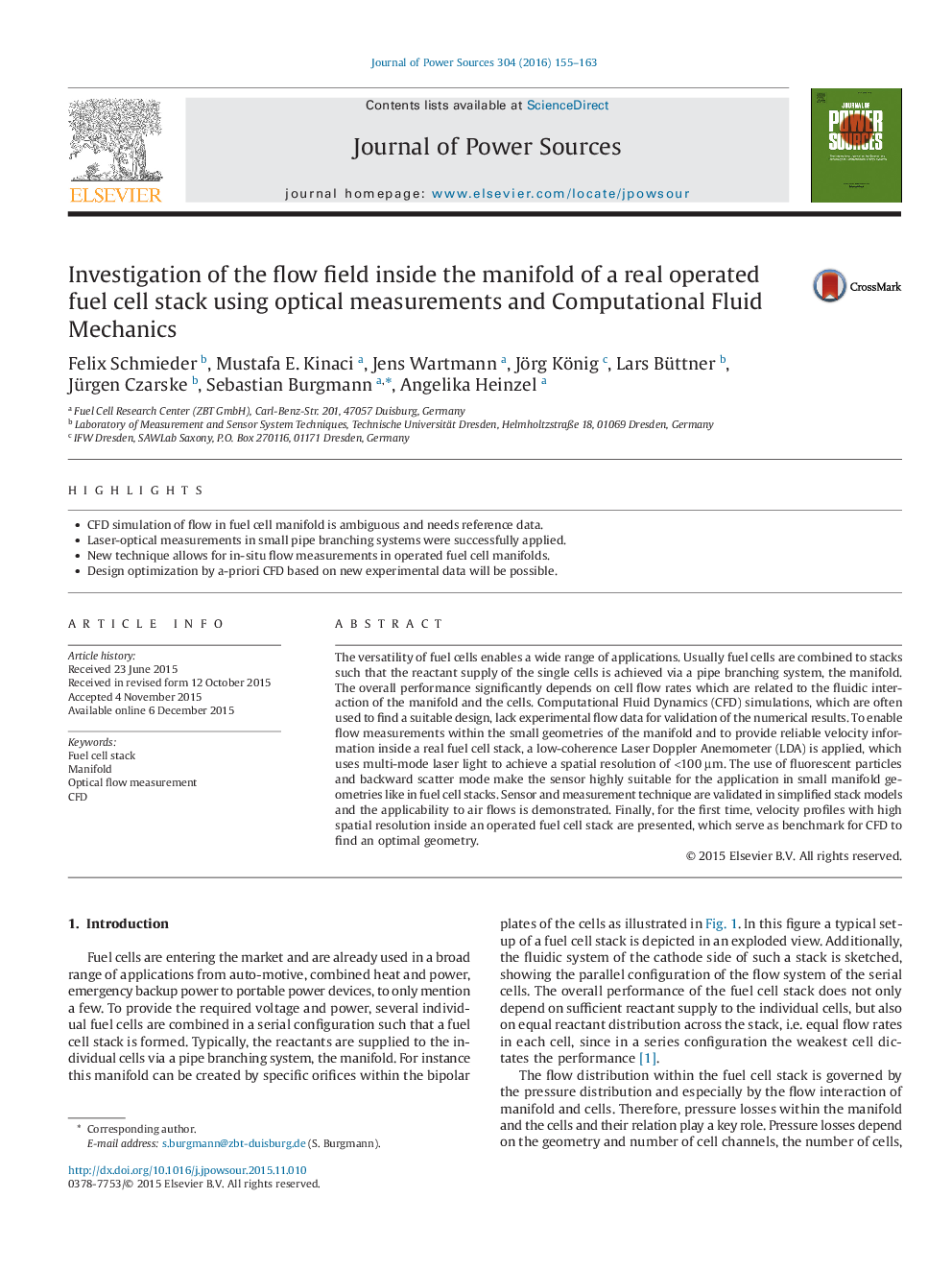| Article ID | Journal | Published Year | Pages | File Type |
|---|---|---|---|---|
| 1285637 | Journal of Power Sources | 2016 | 9 Pages |
•CFD simulation of flow in fuel cell manifold is ambiguous and needs reference data.•Laser-optical measurements in small pipe branching systems were successfully applied.•New technique allows for in-situ flow measurements in operated fuel cell manifolds.•Design optimization by a-priori CFD based on new experimental data will be possible.
The versatility of fuel cells enables a wide range of applications. Usually fuel cells are combined to stacks such that the reactant supply of the single cells is achieved via a pipe branching system, the manifold. The overall performance significantly depends on cell flow rates which are related to the fluidic interaction of the manifold and the cells. Computational Fluid Dynamics (CFD) simulations, which are often used to find a suitable design, lack experimental flow data for validation of the numerical results. To enable flow measurements within the small geometries of the manifold and to provide reliable velocity information inside a real fuel cell stack, a low-coherence Laser Doppler Anemometer (LDA) is applied, which uses multi-mode laser light to achieve a spatial resolution of <100 μm. The use of fluorescent particles and backward scatter mode make the sensor highly suitable for the application in small manifold geometries like in fuel cell stacks. Sensor and measurement technique are validated in simplified stack models and the applicability to air flows is demonstrated. Finally, for the first time, velocity profiles with high spatial resolution inside an operated fuel cell stack are presented, which serve as benchmark for CFD to find an optimal geometry.
